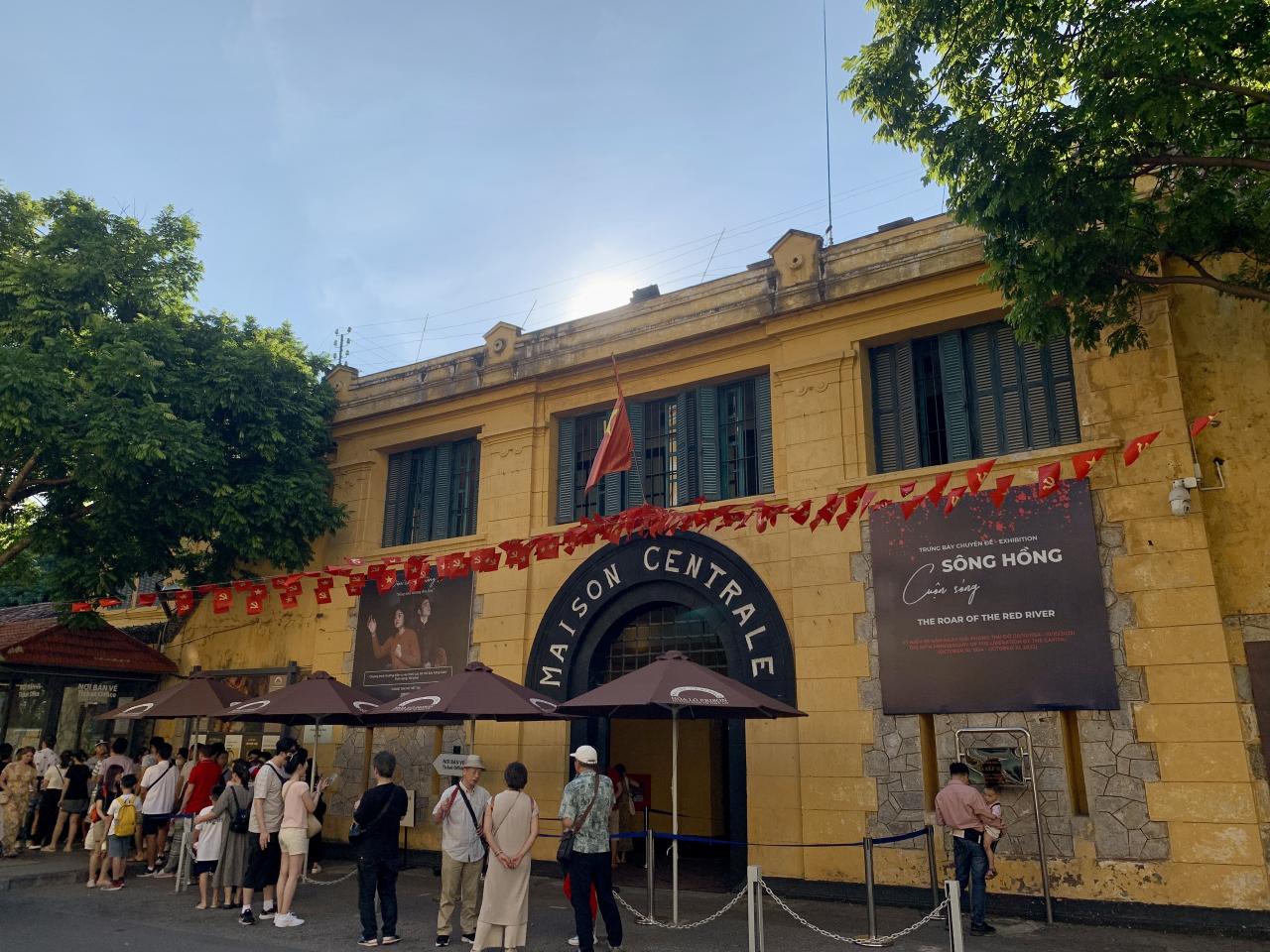In Hanoi, there are many historical and cultural landmarks associated with the Capital Liberation Day on 10.10.1954.
 Long Bien Bridge is considered a historical witness to the victory of our army and people. On July 20, 1954, the Geneva Agreement was signed, forcing French troops to withdraw from Hanoi within 80 days. On October 9, 1954, the last French soldiers crossed Long Bien Bridge. At the same time, the Vietnamese army entered the bridge to prepare to take over the capital. Photo: Nhat Minh
Long Bien Bridge is considered a historical witness to the victory of our army and people. On July 20, 1954, the Geneva Agreement was signed, forcing French troops to withdraw from Hanoi within 80 days. On October 9, 1954, the last French soldiers crossed Long Bien Bridge. At the same time, the Vietnamese army entered the bridge to prepare to take over the capital. Photo: Nhat Minh
 The Bac Bo Phu was the highest governing body of the French administration in the North under the supervision of the Governor-General of Indochina. It was also one of the first places the Vietnamese army took over in the capital 69 years ago. The building has undergone the wars against the French and the American resistance. Currently, the site is the Government Guest House located at 12 Ngo Quyen. Photo: Nhat Minh
The Bac Bo Phu was the highest governing body of the French administration in the North under the supervision of the Governor-General of Indochina. It was also one of the first places the Vietnamese army took over in the capital 69 years ago. The building has undergone the wars against the French and the American resistance. Currently, the site is the Government Guest House located at 12 Ngo Quyen. Photo: Nhat Minh
 Hanoi Station is one of the first facilities taken over by the Vietnamese army from the French. Throughout the years, the station has always been bustling with visitors from all over the country. Hanoi Station has undergone many repairs and restorations, located at 120 Le Duan. Photo: Nhat Minh
Hanoi Station is one of the first facilities taken over by the Vietnamese army from the French. Throughout the years, the station has always been bustling with visitors from all over the country. Hanoi Station has undergone many repairs and restorations, located at 120 Le Duan. Photo: Nhat Minh
 At 15h on October 10, 1954, the Hanoi Opera House was where the historic flag-raising ceremony was announced. To this day, the Opera House is one of the important cultural centers of Hanoi. It regularly hosts cultural and artistic activities of the city and the country. Photo: Nhat Minh
At 15h on October 10, 1954, the Hanoi Opera House was where the historic flag-raising ceremony was announced. To this day, the Opera House is one of the important cultural centers of Hanoi. It regularly hosts cultural and artistic activities of the city and the country. Photo: Nhat Minh
 Doan Mon - Thang Long Imperial Citadel was where the Vietnamese People's Army gathered when taking over Hanoi on October 10, 1954. Photo: Nhat Minh
Doan Mon - Thang Long Imperial Citadel was where the Vietnamese People's Army gathered when taking over Hanoi on October 10, 1954. Photo: Nhat Minh
 69 years ago, Hanoi Flagpole was the site of the sacred flag-raising ceremony on the day of the capital's liberation. In the afternoon of October 10, 1954, the military band played the National Anthem under the direction of Comrade Dinh Ngoc Lien, and the national flag was raised at the Hanoi Flagpole. Photo: Nhat Minh
69 years ago, Hanoi Flagpole was the site of the sacred flag-raising ceremony on the day of the capital's liberation. In the afternoon of October 10, 1954, the military band played the National Anthem under the direction of Comrade Dinh Ngoc Lien, and the national flag was raised at the Hanoi Flagpole. Photo: Nhat Minh
 The Hoa Lo Prison relic is one of the sites taken over by the Vietnamese People's Army on October 10, 1954. Currently, the relic site is one of the attractions drawing a large number of domestic and international tourists. Photo: Nhat Minh
The Hoa Lo Prison relic is one of the sites taken over by the Vietnamese People's Army on October 10, 1954. Currently, the relic site is one of the attractions drawing a large number of domestic and international tourists. Photo: Nhat Minh
Read the article here







Read the article here




